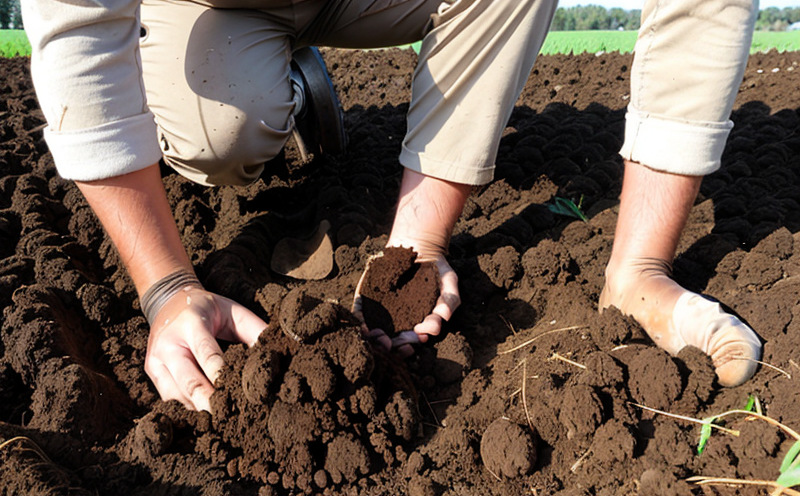Soil Available Nutrients Testing
Soil available nutrients testing is a critical process in agriculture and forestry. Understanding the availability of essential plant nutrients within the soil is fundamental to optimizing crop yield, enhancing plant health, and promoting sustainable agricultural practices. This test helps in identifying the exact amount of key nutrients such as nitrogen (N), phosphorus (P), potassium (K) along with secondary macronutrients like calcium, magnesium, sulfur, and micronutrients like iron, manganese, zinc, copper, boron, molybdenum, and chlorine that are readily available to plants in a form they can absorb. The availability of these nutrients is influenced by various factors including soil pH, organic matter content, microbial activity, and the presence of antagonistic or synergistic interactions between different elements. In agricultural settings, this test provides a clear picture of the soil's capacity to supply nutrients directly to plant roots, which is essential for crop nutrition planning. Soil available nutrient testing is also crucial in forestry where it helps in managing tree growth and health by ensuring that planted forests have access to necessary nutrients. The results can guide fertilization practices and help in preventing deficiencies or excesses that could lead to suboptimal growth and susceptibility to disease.Why It Matters
Ensuring the availability of essential plant nutrients is critical for achieving optimal crop yields, improving soil health, and reducing environmental impact. In agriculture, this test aids in formulating precise nutrient management strategies that enhance productivity without causing pollution from over-fertilization. For forests, it supports sustainable practices by ensuring trees receive the necessary nutrition to thrive. Poor availability of key nutrients can lead to stunted growth, reduced yields, increased susceptibility to pests and diseases, and overall lower quality produce or timber. By identifying these deficiencies early on through testing, growers and foresters can take corrective actions such as applying specific fertilizers or soil amendments that address the exact needs of their crops or trees. This not only boosts efficiency but also contributes positively towards environmental stewardship by minimizing waste and promoting sustainable agricultural practices.Scope and Methodology
The scope of soil available nutrient testing typically includes quantifying the amounts of nitrogen, phosphorus, potassium, calcium, magnesium, sulfur, iron, manganese, zinc, copper, boron, molybdenum, and chlorine that are in a form readily available to plants. The methodology involves collecting representative soil samples from different areas within the field or plantation. Sample preparation is crucial; it often includes air-drying the collected soil, sieving it through appropriate meshes (commonly 2 mm), and then homogenizing it thoroughly before subsampling for analysis. Analytical methods used can range from colorimetric tests to more advanced techniques like atomic absorption spectrophotometry or inductively coupled plasma mass spectrometry (ICP-MS) depending on the precision required. The results are expressed as parts per million (ppm), and standards such as ISO 17295:2013 for soil quality - methods for determining available nutrients might be referenced. Acceptance criteria vary based on specific crop requirements or forest species being cultivated but generally aim to ensure that all critical elements fall within optimal ranges conducive to healthy plant development.Why Choose This Test
- Mitigates the risk of nutrient deficiencies, leading to healthier plants and higher yields.
- Avoids over-fertilization which can cause environmental damage and unnecessary costs.
- Supports sustainable agricultural practices by promoting efficient use of resources.
- Ensures compliance with local regulations concerning soil quality and plant health.
- Facilitates informed decision-making regarding crop rotation and land management strategies.
- Promotes long-term productivity by preventing the build-up of harmful salts or other contaminants in soils.
Frequently Asked Questions
What does 'available' mean when discussing soil nutrients?
In soil science, "available" refers to the portion of a nutrient that is present in forms suitable for uptake by plant roots. This availability can be influenced by factors like pH level and microbial activity.
How frequently should this test be conducted?
Frequency depends on the specific needs of your crops or forest type. It is advisable to conduct these tests at least annually, but more frequent testing may be necessary during significant changes in farming practices or soil conditions.
Can this test also detect trace elements?
Yes, the test can identify both major and minor elements including iron, manganese, zinc, copper, boron, molybdenum, and chlorine.
How do I know if my soil has enough available nutrients?
You should consult with a qualified agricultural or forestry consultant who can interpret the test results in relation to your particular crop requirements. General guidelines are available for specific crops and forest types.
What happens if my soil lacks essential nutrients?
If deficiencies are identified, you can apply appropriate fertilizers or organic amendments to restore the balance of available nutrients in your soil. Proper application techniques should be followed to avoid over-fertilization.
Is this test applicable only for agricultural use?
No, it can also be applied in forestry settings where understanding soil nutrient availability is crucial for healthy tree growth and forest management practices.
How long does the testing process take?
From sample collection to receiving results typically takes around 7-14 days, depending on the complexity of the analysis and any necessary follow-up tests.
Are there any environmental considerations when conducting this test?
Yes, ensuring that soil samples are collected correctly minimizes disturbance to the ecosystem. Additionally, proper disposal of excess soil and chemicals used in testing is essential to protect local environments.





